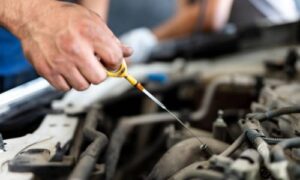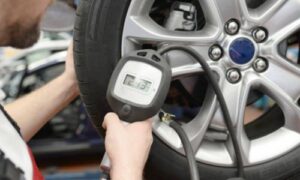Introduction: Insurance for Auto Glass Repairs
Auto glass damage is a common issue that vehicle owners may encounter, ranging from minor chips to significant cracks. When it comes to insurance coverage for auto glass repairs, it’s important to understand the specifics of your policy. Many insurance companies offer comprehensive coverage, including auto glass repairs, but reviewing your policy and checking for any deductibles or limitations is crucial. Additionally, some policies may only cover certain types of damage or require you to use approved repair shops. Understanding how insurance coverage comes into play for auto glass repairs is crucial for making informed decisions and minimizing out-of-pocket expenses. This guide will break down the key aspects of insurance coverage for auto glass repairs.
Types of Insurance for Auto Glass Repairs
1. Comprehensive Coverage: Insurance Coverage for Auto Glass Repairs
Comprehensive coverage, often called “full coverage,” is the primary insurance type for auto glass repairs. This coverage is optional and is designed to protect against non-collision events, such as vandalism, theft, and, importantly, damage to your windshield or other auto glass components. Comprehensive coverage typically includes windshield repairs or replacements without a deductible, making it a cost-effective option for auto glass repairs. However, it’s important to review your policy carefully, as some insurance companies may have specific guidelines or limitations on the extent of coverage for auto glass repairs.
2. Deductibles: Insurance Coverage for Auto Glass Repairs
You may have a deductible for auto glass repairs covered by comprehensive insurance. The deductible is the amount you’re responsible for paying before your insurance kicks in. Some insurance policies offer zero-deductible glass coverage, meaning you won’t have any out-of-pocket expenses for glass repairs. It’s important to note that even if you have a deductible for auto glass repairs, it may still be more cost-effective to use your insurance coverage rather than paying for the repairs out of pocket.
Coverage for Different Auto Glass Components
1. Windshield Repair and Replacement
Most insurance policies cover windshield repairs and replacements. Some policies may even cover multiple windshield repairs within a specific timeframe before a replacement is necessary. This coverage typically includes damage caused by rocks, debris, and other common hazards on the road. However, reviewing your policy to understand any applicable limitations or exclusions is important. Some insurance companies may require you to use their approved glass repair shops for these services.
2. Side Windows and Rear Windows
Comprehensive coverage typically extends to side windows and rear windows. If these windows are damaged due to covered events, your insurance should cover the repair or replacement costs. It’s worth noting that comprehensive coverage for side and rear windows may have a separate deductible from your main comprehensive coverage. This means you may be responsible for paying a different amount before your insurance kicks in. Additionally, it’s important to check if your policy covers the cost of window tinting or any aftermarket modifications to the windows, as these may not be included in the coverage.
3. Sunroof and Mirrors
In some cases, comprehensive coverage may also extend to sunroofs and mirrors. If your sunroof or mirrors are damaged due to a covered event, your insurance should cover the repair or replacement costs. However, reviewing your policy to confirm whether these items are included in your comprehensive coverage is important. Additionally, similar to windows, there may be a separate deductible for sunroofs and mirrors that you would need to pay before your insurance coverage applies.
Process for Filing a Claim
1. Document the Damage
Before filing a claim, document the damage to your auto glass. Take clear photos from different angles, showing the extent of the damage. This documentation will be important when filing your claim and can help ensure you receive the appropriate coverage for your sunroof or mirrors. It’s also a good idea to keep receipts or invoices related to repairing or replacing these items, as your insurance company may require them during the claims process.
2. Contact Your Insurance Provider
Contact your insurance provider to report the auto glass damage and initiate the claims process. Provide them with the documentation you have gathered, including the photos and any receipts or invoices. Be prepared to answer any questions about the incident and provide additional information they may need to process your claim. Doing this as soon as possible is important to ensure a timely resolution and avoid any potential complications with your coverage.
3. Schedule Repairs with an Approved Provider
Your insurance provider may have a list of approved auto glass repair shops. Choose one from the list and schedule the repairs. By selecting an approved provider, you can ensure that the repairs will be done by professionals who meet your insurance company’s standards. Using an approved provider may also help streamline the claims process and expedite reimbursement for any out-of-pocket expenses you may have incurred.
4. Payment and Deductible
If you have a deductible, be prepared to pay that amount to the auto glass repair shop. Your insurance will cover the remaining cost. If you have zero-deductible glass coverage, you won’t need to pay anything out of pocket for the repairs. It is important to note that the deductible amount may vary depending on your insurance policy, so reviewing your policy details beforehand is recommended. Additionally, choose to use a non-approved provider for the repairs. You may be responsible for paying the full cost upfront and seeking reimbursement from your insurance company.
Considerations and Tips: Insurance for Auto Glass Repairs
1. Timely Repairs
Address auto glass damage promptly. Small chips can quickly escalate into larger cracks, making the repair more complex and potentially requiring a full replacement. Timely repairs help maintain the structural integrity of your vehicle.
2. Insurance Coverage Review: Insurance for Auto Glass Repairs
Regularly review your insurance policy to understand the extent of your coverage for auto glass repairs. Policies vary, and staying informed ensures you know what expenses are covered and what deductibles may apply.
3. Choose Professional Repair Shops
Select a reputable and professional auto glass repair shop. Look for certifications, positive customer reviews, and a commitment to using quality materials. A skilled technician ensures that the repairs meet safety standards.
4. Quality of Materials
Inquire about the quality of materials used for repairs. Opt for shops that use industry-approved materials, as the integrity of your auto glass is crucial for safety and durability.
5. Ask About Warranty
Before proceeding with repairs, inquire about the warranty offered by the repair shop. A reputable shop should provide a warranty that covers their work, giving you peace of mind about the longevity of the repairs.
6. Consider Repair vs. Replacement
Not all auto glass damage requires a full replacement. In many cases, smaller chips and cracks can be effectively repaired. Determine the most cost-effective and safe solution with your chosen repair shop.
According to insurance company statistics, up to 30% of damaged windshields can be successfully repaired rather than replaced.
7. Document the Damage
Before initiating repairs, thoroughly document the damage. Take clear photos from various angles, capturing the size and location of the damage. This documentation can be valuable for insurance claims and as a reference for the repair process.
8. Understand Repair Process
Ask the repair technician to explain the repair process to you. Understanding how the repair will be conducted can help you appreciate the complexity of the task and the skill involved.
9. Prevent Further Damage
While waiting for repairs, take precautions to prevent further damage. Avoid extreme temperature changes, such as using hot water on a cold windshield, and be cautious about heavy impacts on the damaged area.
10. Schedule According to Weather
Consider scheduling repairs based on weather conditions. Extreme temperatures, rain, or snow can impact the effectiveness of the repair process. Choose a time when weather conditions are conducive to successful repairs.
11. Follow Post-Repair Instructions
After the repairs are completed, follow any post-repair instructions provided by the technician. This may include avoiding washing the vehicle for a specified period or refraining from exposing the repaired area to certain conditions.
12. Regular Maintenance Checks
Incorporate regular maintenance checks for your auto glass. Periodically inspect for any new damage and address it promptly to maintain your vehicle’s overall safety and longevity.
By keeping these considerations and tips in mind, you can confidently navigate the process of auto glass repairs, ensuring your vehicle’s safety and integrity.
Conclusion: Insurance for Auto Glass Repairs
In conclusion, understanding insurance coverage for auto glass repairs is vital for vehicle owners facing unexpected damage. Comprehensive coverage, covering various auto glass components, is the key player in this scenario. Documenting the damage, contacting your insurance provider promptly, and choosing a reputable repair shop are essential steps. By being informed about your policy details and following the correct procedures, you can navigate auto glass repairs seamlessly and minimize the financial impact on your wallet.
FAQs related to Insurance for Auto Glass Repairs
Q1: What types of insurance cover auto glass repairs?
A1: Comprehensive coverage is the primary insurance type that covers auto glass repairs. It protects against non-collision events, including damage to your windshield and other auto glass components.
Q2: Is there a deductible for auto glass repairs?
A2: In many cases, a deductible for auto glass repairs is covered by comprehensive insurance. However, some policies offer zero-deductible glass coverage, meaning you won’t have any out-of-pocket expenses for glass repairs.
Q3: What auto glass components are typically covered?
A3: Comprehensive coverage typically extends to various auto glass components, including windshields, side windows, rear windows, and, in some cases, sunroofs and mirrors.
Q4: How do I file an insurance claim for auto glass repairs?
A4: To file an insurance claim, document the damage, contact your insurance provider to report the incident, provide necessary information, and schedule repairs with an approved provider. Be prepared to pay your deductible if applicable.
Q5: Can I choose any repair shop for auto glass repairs?
A5: While you can choose any repair shop, working with an insurance-approved provider can streamline the process and ensure the repairs meet the insurance company’s standards.
Q6: What if I have zero-deductible glass coverage?
A6: If you have zero-deductible glass coverage, you won’t need to pay anything out of pocket for auto glass repairs. The insurance will cover the entire cost.






